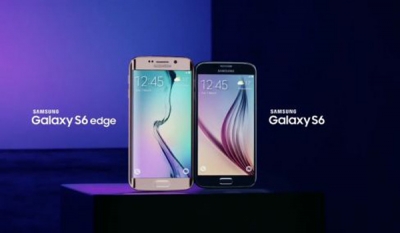The smartphones, unveiled this evening (1 March) at Mobile World Congress in Barcelona, have been created to reflect Samsung’s new mantra – ‘design with purpose’ –and feature stronger battery life, simpler and more intuitive design, built-in wireless charging, faster processers, and better cameras.
They will also feature Samsung Pay – the firm's equivalent to Apple Pay – and its answer to mobile payments, according to its chief executive JK Shin who pledged the Galaxy S6 and S6 Edge would “push the boundaries” in mobile payments.
Speaking at the unveiling JK Shin described the two new devices as the fruits of the firm’s “relentless innovation”.
He added: “These new phones are beautifully designed, and we believe in design that has a purpose.
That is why the S6 Edge can charge wirelessly, so no more fumbling for power cords in the dark.
That’s design with a purpose – that’s the future. I’m very proud of this company and the team behind it. I believe that Samsung has an important role to play in advancing technology in our daily lives. We push ourselves hard.
“…So I’m proud to reveal the Galaxy S6 and S6 Edge today. We set out to deliver something that’s better than we have ever built before, and I think we did it. What’s next, is now.”
The ultra-thin Galaxy S6 and the dual-curved Galaxy S6 Edge designs portray Samsung’s mission to “redefine” the Galaxy brand with the company taking a crowd-sourced approach to some of the new features.
Samsung head of innovation Hyun Yeul Lee said: “Our new design philosophy is design with purpose.
We have been listening – the changes we have made were made by our customers.
We reimagined the user experience so it’s more intuitive and simpler to use; there is a more logical structure.
We swapped out icons and replaced them with clear concise text to make it better experience.
"There will be no more struggling with hard to use and hard to find features. Lag or stuttering is gone; even the smallest gestures are registered."
She described the devices as "insanely" responsive, adding that the visual experience has been made brighter and simpler.
"We have also made colour codes to make specific associations with functionalities – orange for contacts, purple for video, green for calls.”
Meanwhile it features a 5-megapixel front camera and 16-megapixel rear camera, while the pixel density of the camera has been increased 11 per cent, to provide more crisp images.
The company has also claimed the batteries will take only 10 minutes to get enough charge for four hours of use.
“It takes half the time as the iPhone 6 to charge,” added vice president of mobile design Justin Denison at the unveiling.
He also drew on its biggest rival to demonstrate the superiority of its camera product, claiming it can offer brighter options for low-light environments.
The smartphones will be released on 10 April across 20 countries and 32GB, 64GB and 120GB variations.
However, despite its efforts to claim new breakthroughs in design, mobile payments, and features, analysts remain unconvinced the changes will be enough for the Japanese firm to claw back market share.
Commenting on the unveilings Forrester analyst Thomas Husson said:
“Despite a new hardware design and some software innovation, there's a risk Samsung’s 2015 flagship devices are insufficient for the company to regain brand leadership among consumers and businesses looking for high-end smartphone experiences.
“Samsung’s lack of software DNA will still prevent it from delivering truly differentiated service experiences like Apple does with its premium ecosystem.
This is particularly true when it comes to payments and wallets: Despite broader acceptance among merchants, further to the LoopPay acquisition, Samsung Pay is unlikely to offer the same level of convenience and trust as Apple Pay.
He also predicted that the firm will face increasing competition from Chinese brands tapping into the Android ecosystem, but also from Google, which he described as its “strategic partner” in successful establishment of the Galaxy ranges.
Ian Fogg, head of mobile analysis, IHS Technology, said:
“With a clearly differentiated form factor for this year's flagship, the Galaxy S6 and S6 Edge, Samsung will hope to see a similar leap to the iPhone shipment's 46 per cent year-on-year quarterly jump when Apple offered larger screen models.
"But, whether Samsung can realise this sales improvement depends on its ability to manufacture the Edge model at scale and avoid teething problems with the Exynos chipset it is using in a global flagship for the first time.
Meanwhile he referenced Samsung Pay, bolstered by its recent acquisition of Loop Pay, marks its efforts to build its own Samsung ecosystem.
“Apple Pay will prove a market and educate partners in 2015, but it leaves room for someone to become the dominant payments provider for the rest of the Android-powered market.
“Samsung Pay leverages the new fingerprint sensor in the S6 which no longer needs to be swiped, the move to tokenised credit cards, and the Loop Pay business. Unlike rivals, Samsung aspires to provide wide compatibility through enabling barcode, MST and NFC support.”
Samsung also unveiled the launch of its new Gear VR, which works with both S6 and S6 Edge.























